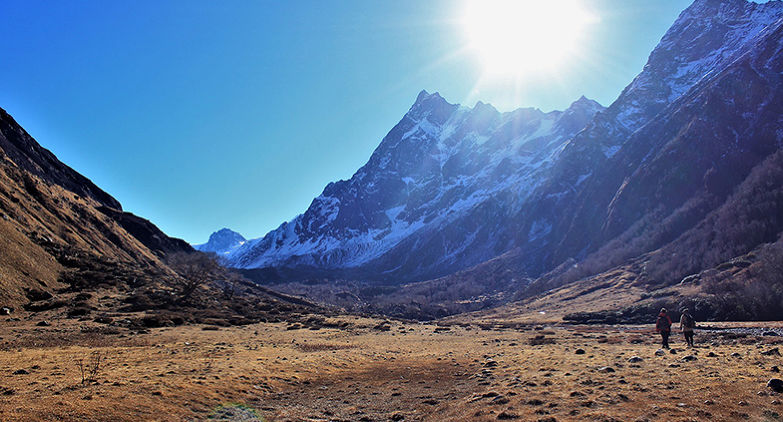Leh Ladakh is a dream destination that every traveler wants to visit once in his life. This is a Buddhist empire, with palaces, gompas, and monasteries overlooking the strong Ladakh countryside. This is a place with rare landscapes, which in India can never be found. You must know first of all if the places are in Leh Ladakh to visit.
1. Pangong Tso Lake
Recall the film “3 Idiots” of the lake? Ok, in Leh Ladakh, this is Pangong Tso Lake. A photographer’s delight is the sparkling blue water of the lake, with the surrounding countryside of untouched mountains.
The lake freezes in winter and the surface of the lake draws visitors to the Ice Ski Festival. The lake breeds migratory birds and it is an interesting experience to camp around the lake.
2. Shanti Stupa
Shanti Stupa’s striking white structure and the dome are the most visible landmarks in Leh Ladakh. It was designed to commemorate 2500 years of Buddhism and promote world peace by Japanese and Ladakhi Buddhist people.
The white surface looks splendid throughout the day, but in full moon night, while bathed in the soft glow of the moon rays it looks more stunning. Tourists will feel the joy of meditation inside the stupa, and also see the sunrise and sunset in amazing views.
3. Tso Moriri Lake
Tso Moriri Lake is the largest alpine lake in India compared to the other lakes in Leh-Ladakh. The distant location, harsh weather, and rugged roads make this lake less visitable for tourism.
The lake, its blue waters, mountain scenery, and the open sky, are beautiful to look at. Camping here is a must-do experience near the lake and sleeping under the starry night sky.
4. Leh Palace
The Leh Palace is a magnificent example of Tibetan medieval architecture and design, built in the 17th century. Leh Palace’s ingenious construction warms the interior on cold days and cools in the middle of the summer. The halls, large halls, and rooms are inside. There are rooms.
The surrounding country from the top can be seen from a good angle. Although it is now in ruins, the monument in Leh Ladakh is the most visited.
5. Khardung La Pass
The highest motorway in India is this Ladakh mountain pass. While in modern times the people knew Khardung La Pass, it was part of an old caravan path that transported supplies from Leh to the cities in Central Asia.
Its uniqueness makes it the place for excursions on mountain biking. It is also the most tragic road to travel, as a driver’s nightmare is caused by heavy traffic falls in rocks, snow, mud, and craters.
6. Magnetic Hill
The hill is named because vehicles seem to defy gravity and roll up the hill when stationed at an indicated location. Even if the truth or illusion is not certain, this hill draws tourists to see this unique show.
7. Nubra Valley
If you wish to observe Leh Ladakh’s true splendor, then you must travel to the Nubra Valley. This lush, Nubra- and Shyok-based Valley has beautiful apple groves, picturesque countryside, and colorful monasteries of the Buddhist era. The large sand dune in the cold desert gives the landscape a surreal feel.
8. Namgyal Tsemo Gompa
The journey to Namgyal Tsemo Gompa can be a spiritual and visual experience for tourists. The Monastery was built on a rocky mountain in the 15th century and has a beautiful view of the Zanskar Mountains and the River Indus.
It is famous because of the Maitreya Buddha’s three-story golden statue. With its Tibetan architecture, frescos, and painting of walls inside the monastery, the monastery is beautiful to behold.
9. Spituk Monastery
Leh Ladakh is an impressive monastery founded in the 11th century. It has the goddess of Buddha Lord, old sculptures, masks of the festival, and an idol of Kali Goddess.
The Spituk Festival is a colorful celebration, held annually, in which the idol of Kali is unveiled and monks mask dances accompanied by priests. A stunning view over the village and the surrounding mountains are offered by the Monastery.
10. Hall of Fame Museum
The Hall of Fame Museum has been constructed to commemorate the soldiers who have been killed in the Kargil and Siachen Glaciers wars in Indo-Pakistan.
The Indian Army maintains the museum and includes captured arms and ammunition, biographies of courageous soldiers, uniforms and other items related to the Indian Army. In addition to many other items, one can also learn about the Ladakhi culture and wildlife of this area.
